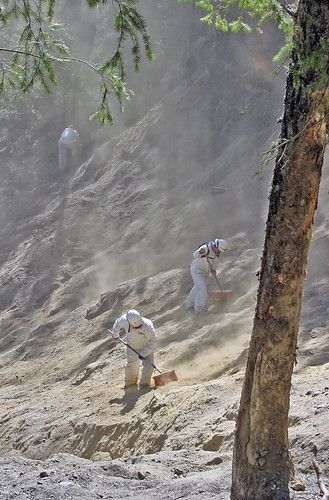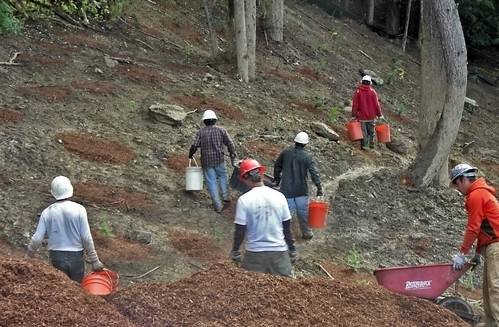
For over a century, toxic runoff from the Blue Ledge Mine destroyed aquatic life and fisheries in Joe Creek, a tributary to the world-famous Rogue River in Oregon.
But recently the U.S. Forest Service successfully completed a $15 million cleanup at the abandoned superfund site in the remote, rugged mountains just south of the Oregon-California border which will significantly improve the fish and wildlife habitat.
The Blue Ledge Mine consisted of more than two miles of underground workings on ten levels and yielded copper, zinc, gold, silver, and lead.
Miners had dumped over 150,000 tons of sulfides-rich waste rock on the extremely steep mountain slopes. These waste rock piles became the source of highly toxic metal-rich acid mine drainage that, during peak flows in the spring, discharged 500,000 gallons per day into the creek.
Poor access and extremely hazardous conditions presented substantial challenges for the cleanup crew.

The project excavated over 66,500 cubic yards of waste rock from the steep slopes and hauled it to a sealed repository 1.5 miles from the mine.
The contractor crew used three spider excavators to climb up the rock piles to remove the waste rock from the top down until the pile could be reached by conventional excavators and dozers. Workers used picks, shovels and brooms to clear waste rock down to bedrock.
Five off-highway 35-ton articulated dump trucks hauled over 5,000 loads of waste rock down steep access roads. Helicopters ferried a mini excavator, 30,000 lbs of reclamation materials, and 20,000 pounds of steel for bat gates that were custom built at the mine’s openings.
Reclamation efforts included distributing clean topsoil on slopes, planting 10,000 native shrubs and trees, lining of drainage channel banks, installing slope stabilization mesh, and placing native grass seed and mulch on 20 acres of disturbed ground.
See more photos on the Forest Service site.

